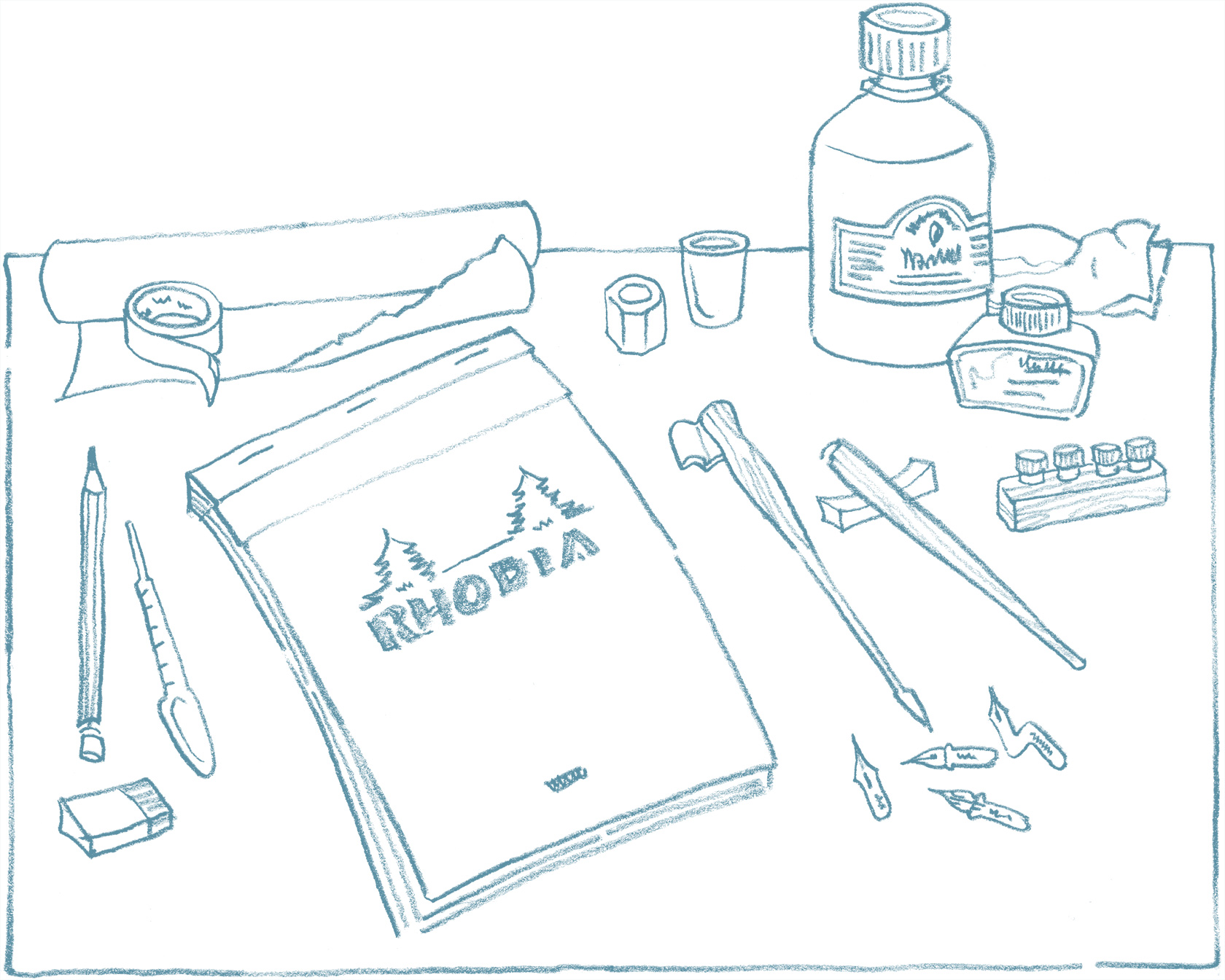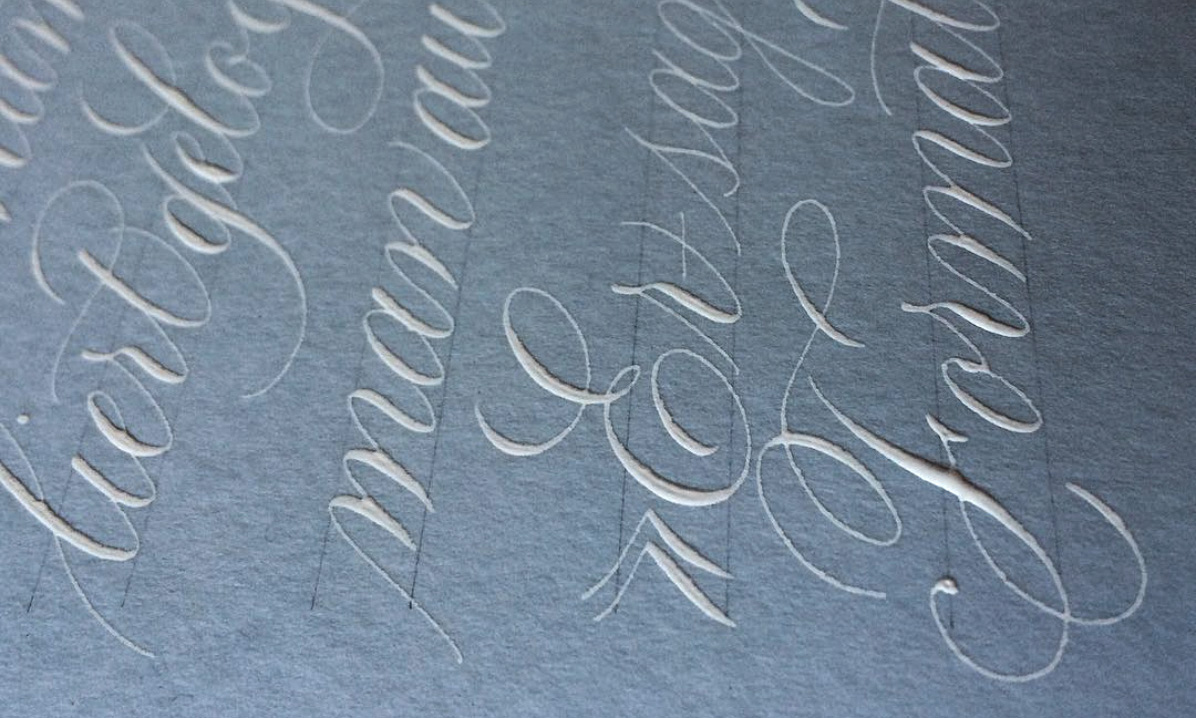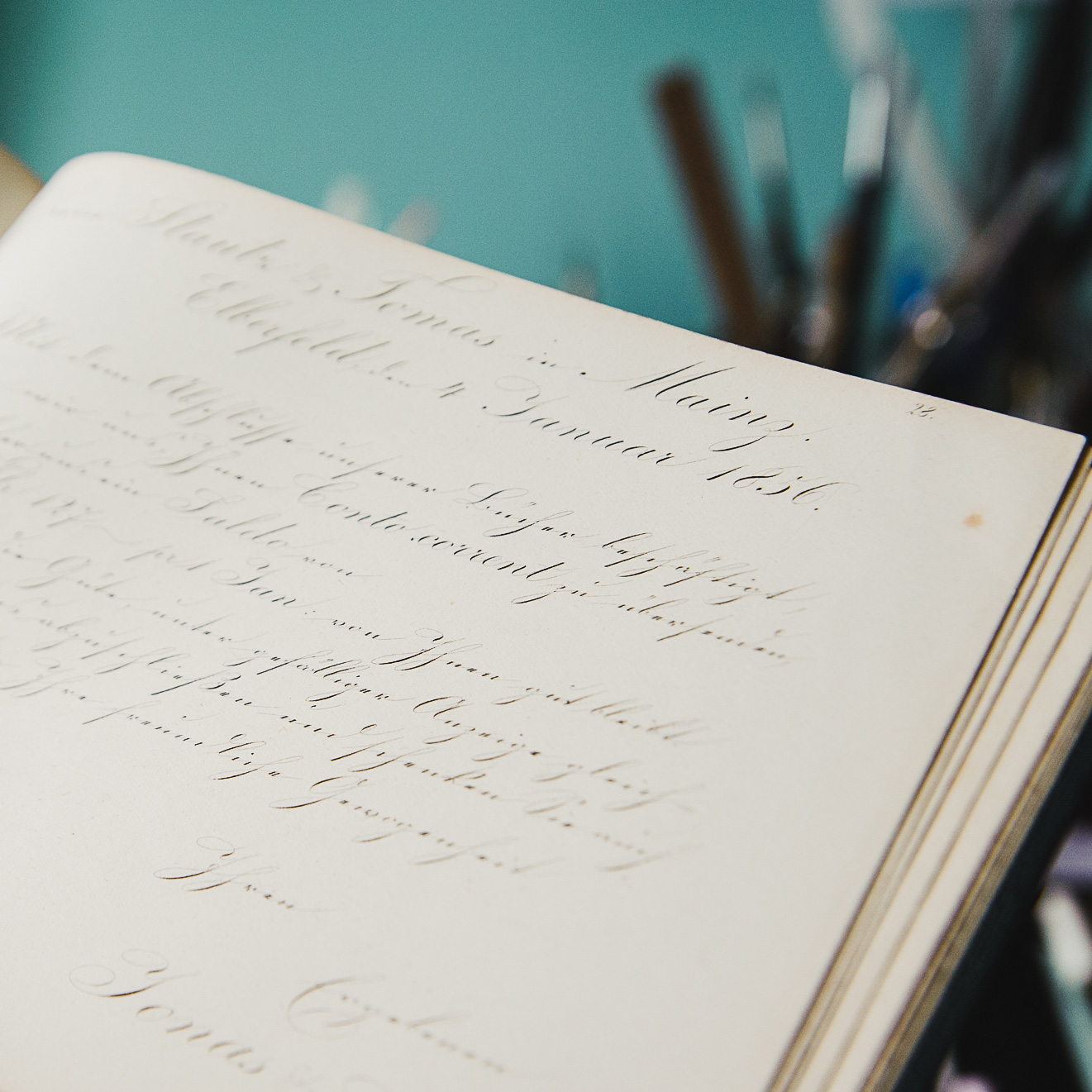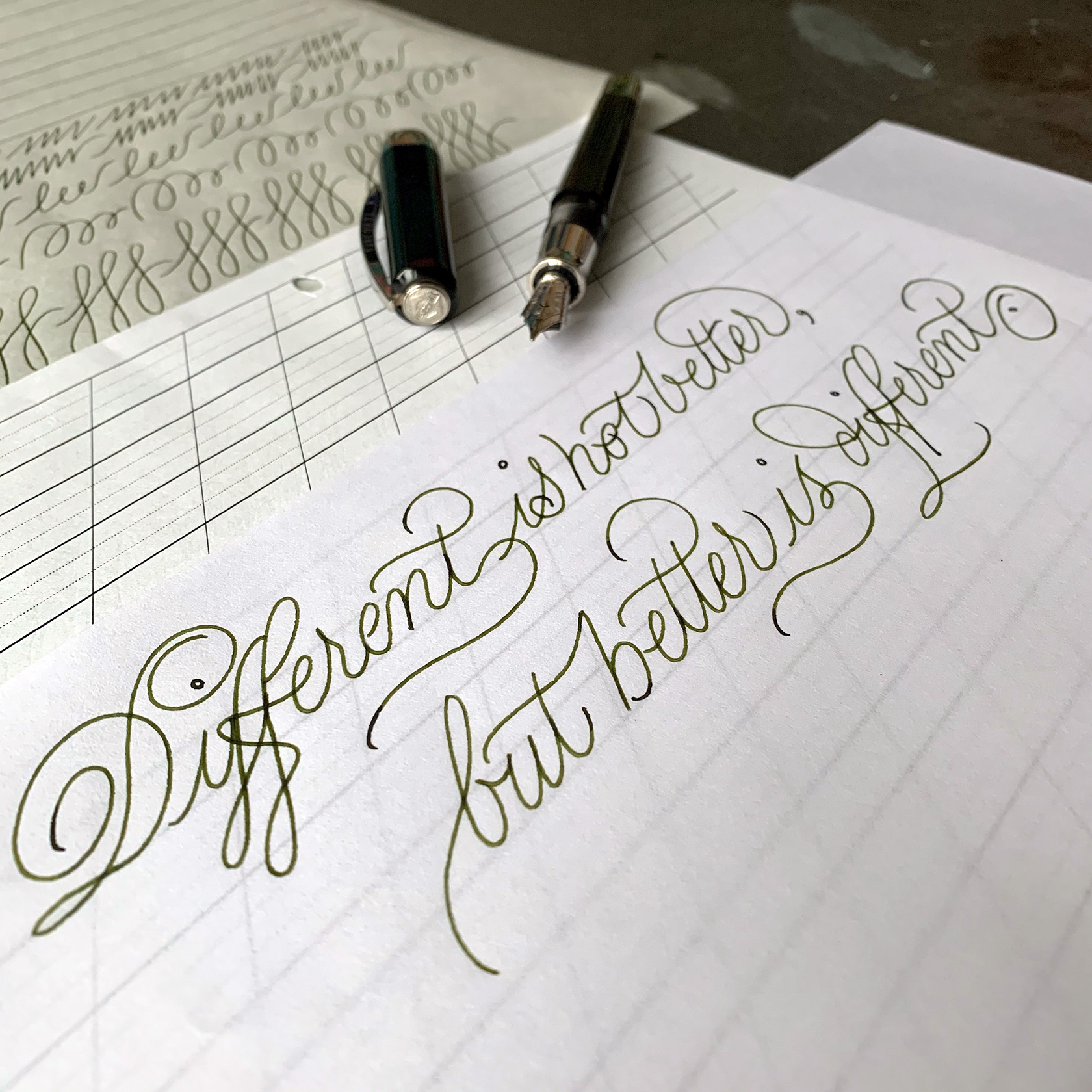
Important for successful practice is (besides the knowledge of the letter forms) especially the well matched combination of pen, ink and paper!
Few questions I get asked more often on Instagram or YouTube than this one about what nib(s) I use ... very often I’m also asked about the best nib holders, inks and papers. My usual answer is, it depends! Not every nib is suitable for every paper, not every ink works equally well on every paper. Admittedly: Most of my favorite nibs are antique nibs, are no longer made, and prices have risen to astronomical heights in some cases in recent years due to the awakened interest in calligraphy. Since I don’t want to contribute to the hype, here’s just a hint that there are also lesser known, very good nibs besides the famous »dream points«. You just have to try a lot, and rummage in online sellers, household liquidations and junk stores! A concrete tip: A solid, durable modern pointed nib with a good price-performance ratio is the Brause 361 Steno nib – a great beginner’s nib, because it glides smoothly over the paper, still allows fine lines and also works very well with gouache and metallic inks.
Of course, you’ll also need a penholder in which to insert the nib - for pointed pen calligraphy, I prefer slanted or "oblique" penholders. The latter allows you to write with the pointed nib in a way that makes it easier to create smooth swells. Most oblique penholders have a small metal flange inserted at an oblique angle into a body of wood, acrylic or other material. The entry-level, inexpensive plastic model is the Speedball, which I recommend only to a limited extent. In the plastic holder, the nib sits very rigidly and you can’t adjust the angle of the nib to the paper at all. Also not every nib fits – nevertheless many colleagues like this holder. Decide for yourself! An alternative is to use elbow nibs, which can be inserted into a normal, i.e. straight, penholder. Like all nibs, however, they naturally wear out with use – pointed nibs are consumables! Somewhat more expensive, but more versatile, is an adjustable penholder made of wood and metal, that will be able to hold a wide variety of nibs.
If I could only take one ink to a desert island, it would definitely be walnut ink: it’s both great for practicing and dark enough even for scanning, flows beautifully from the nib, a good alternative to iron gall ink, with a warmer hue, water-thinnable (for lighter tints), water-soluble, but lightfast. Iron gall ink – the classic among writing inks, most medieval codices were written with it – produces fantastic finest hairlines and the line hardly ever breaks even with heavy swell strokes, it is lightfast and quite waterproof, but due to its high acid content causes steel nibs to wear out quickly. Still just right for some projects! – If you’re looking for a truly waterproof ink, I recommend Ziller’s Inks, highly pigmented acrylic-based inks. You will need to dilute these with a little water for use with pointed pen. – The best white ink in my eyes is Dr. Martin’s Bleedproof White – this is actually a correction fluid and must also be diluted! You can find instructions here.
Especially for beginners and for practicing, I recommend rather smooth paper – e.g. Rhodia or Triomphe by Clairefontaine, – otherwise you’ll constantly struggle to keep the nib from getting stuck in the paper! More exquisite papers with some structure require experience and intuition. For original pieces, I recommend high-quality watercolor paper (available at artist supply stores), if you want to play it safe, choose »hot pressed«, but coarser watercolor or handmade paper can also work fantastically if you’ve had some practice. Also pay attention to the surface of envelopes, cards, etc. - too smooth will repel ink, too coarse and unglued will often cause »feathering« (meaning, the ink will spread and not create smooth, crisp lines). Be sure to always buy small quantities to test before embarking on a more extensive project!
You’ll find a number of US and UK shop recommendations in the right column – for more shops, also in continental Europe, please refer to my German site!
If you are in Canada, the UK or the USA, there may be a local calligraphy guild in your area that organizes workshops or classes. If not, there are now quite a lot of online resources where you can find help and information about (pointed pen) calligraphy – and also a still growing online community of people who love calligraphy.
Meanwhile, there are quite a lot of online resources on the subject of pointed pen calligraphy. Especially when you’re starting out, in my experience it’s tremendously helpful to be able to ask questions in a forum like, »Why does the ink drip out of my nib in such a funny way« - »What nib will work on handmade paper?« - »How do I mix gouache colour properly?« ... and so on! On the right, you’ll find some links to sites where you can ask questions and inform yourself.

Tips and tricks for handling different inks and papers are often extensively discussed and explained in online forums!
There are so many wonderful books out there for self-study and inspiration! For pointed pen calligraphy in particular, I would of course like to recommend my book to you (though it’s only available in German at the moment …). For historical sources, the Penna Volans website is a fantastic treasure trove – you’ll find there essays about penmanship and calligraphy, an extensive link collection to historical copy books and also very accurately traced letter forms available for purchase. — On the right column here, you will find a small selection of books, all of which I can’t imagine my shelf without. Why not order books locally – by doing so you support the independent book trade, publishers and authors.

Whether old or new, books are a wonderful source of inspiration! © for the fotography: Lisa Weinstein
Because many have asked for it - here is now a set of my script grids for download! Grid sheets are a great help in learning – both in keeping the letter height, the line spacing and last but not least the script angle. The grids here are not meant to be printed out and written on directly – the lines are too thick and dark for that. I use these grids by printing them on heavier paper and attaching a sheet of semi-transparent paper to them (with washi tape). Normal 80 to 100 g paper is transparent enough, even without a light table.
Copperplate Script Raster Horizontal PDF
Copperplate Script Raster Vertical PDF
Madarasz Script Raster Horizontal PDF
Copperplate nach Valliciergo Raster Horizontal PDF

Grid sheet in use: You can also use a fountain pen to recreate Copperplate calligraphy aka English Roundhand.